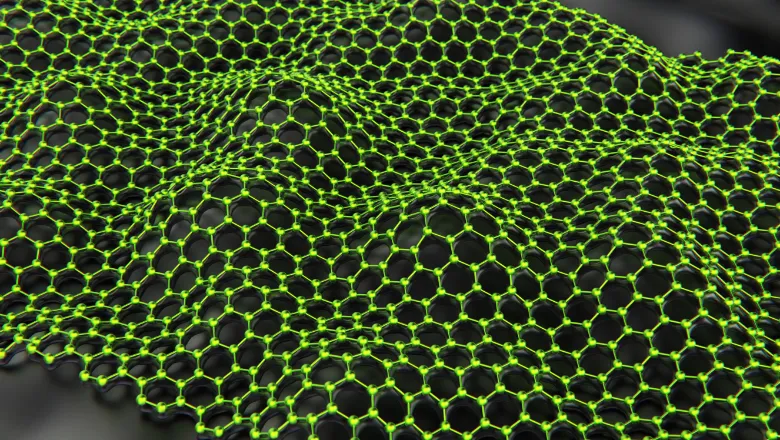In this study, we introduced chemical methods to make GO more biofriendly and unravelled the link between proteins in the corona and GO’s safety profile. Most importantly, we showed that in silico methods could accurately predict toxicity in mice offering ways to substitute the use of animals. I am proud of this cross-continent team effort between UK, Hong Kong, China and the USA.”
Professor Khuloud Al-Jamal, Professor of Drug Delivery & Nanomedicine and Head of Medicines Development
13 August 2024
Protein reduces toxicity of drug-delivery material made of graphite
A new publication has discovered improvements that reduce the toxicity of graphene oxide (GO), making it a more viable nanomaterial for delivering medical drugs.

A new publication has discovered ways to reduce the toxicity of graphene oxide (GO), an ultra-thin sheet of nanomaterial derived from graphite, laying the groundwork to use it as a drug delivery system.
Professor Khuloud Al-Jamal, who led the study, said: “Researchers have been incredibly excited in the potential medical applications of graphene since experiments into the nanomaterial were recognised with the Nobel Prize in Physics in 2010. However, concerns around toxicity have remained a consistent obstacle."
Graphene oxide (GO) is an ultra-thin sheet derived from graphite. It is similar to pencil lead but includes attached oxygen atoms, making it compatible with water. Its unique physical and chemical properties mean it has a high capacity for carrying antibiotics and anticancer drugs, among others, as well as targeting specific cells, making it a potentially effective drug delivery system.
When GO enters the body, it interacts with proteins found in biological fluids like plasma and cerebrospinal fluid. This interaction leads to the formation of a hardened coating of proteins – otherwise known as a protein corona – around the GO that influences the behaviour and toxicity of the nanomaterial.
Therefore, to safely take advantage of this drug delivery system, significant research is required to alter the GO surface, or its delivery method, and alleviate its toxic effect inside the body.
A new multidisciplinary study, published in ACS Nano, was able to reveal the circumstances that cause the corona to drive toxicity. Using this knowledge, the researchers subsequently investigated and identified proteins in the corona that successfully mitigated GO toxicity, creating potential for its use as a drug delivery system and laying the groundwork for injectables and implants made from nanomaterials.
Two types of GO sheets with new chemical modifications were tested to see how they bind to the corona protein, and their impact on the wider body. Results from mice models showed that sheets with a low protein coating caused more severe damage to the liver and lungs, as well as signs of increased molecular markers of inflammation and blood toxicity. This was most apparent in mice models with normal, functioning immune systems.
Detailed analysis of the findings allowed the researchers to identify consistent patterns linking the protein coatings to their toxic effects in mice. They found that increased quantity of the corona led to reduced toxicity from the GO, with further analysis identifying key proteins within it that could also mitigate the toxicity of the nanomaterial.
This multidisciplinary approach, comprising chemistry, 2D materials, proteomics, mathematical modelling and animal research is a major step forward for the potential practical application of GO as a drug delivery system and other nanomaterials.


